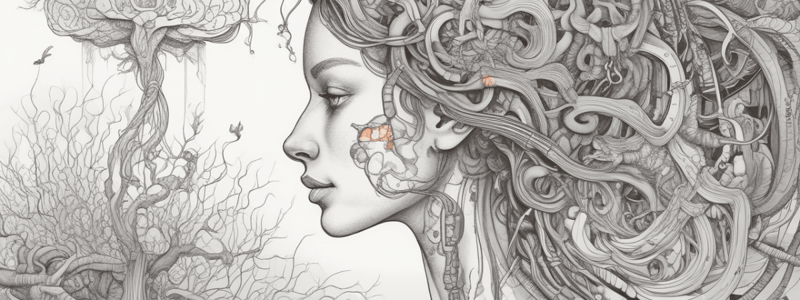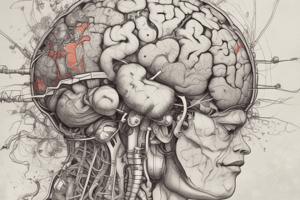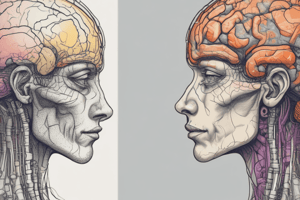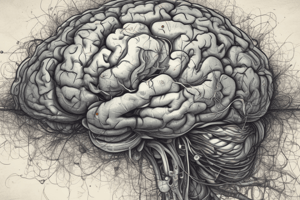Podcast
Questions and Answers
What is the main goal of managing intracranial pressure?
What is the main goal of managing intracranial pressure?
- Lowering blood pressure
- Preventing seizures
- Reducing traumatic brain injury
- Maintaining normal physiological processes (correct)
What is a key difference in the clinical manifestations of seizures and raised intracranial pressure?
What is a key difference in the clinical manifestations of seizures and raised intracranial pressure?
- Level of consciousness (correct)
- Location of the injury
- Type of brain injury
- Duration of the episode
What determines the classification of head injuries?
What determines the classification of head injuries?
- Location of the injury
- Time of onset
- Mechanism of injury (correct)
- Severity of symptoms
What is a crucial aspect of nursing management for traumatic brain injury?
What is a crucial aspect of nursing management for traumatic brain injury?
What is the primary focus of interprofessional management for seizures?
What is the primary focus of interprofessional management for seizures?
Flashcards are hidden until you start studying
Study Notes
Seizures
- Aetiology: can be caused by genetic predisposition, head trauma, infections, tumors, and metabolic disorders
- Clinical manifestations: altered state of consciousness, convulsions, muscle rigidity, loss of bowel control, and post-seizure confusion
- Nursing management: maintain a safe environment, monitor vital signs, administer medications as prescribed, and provide emotional support
- Interprofessional management: collaboration between healthcare professionals, including neurologists, nurses, and pharmacists, to develop a personalized treatment plan
Normal Intracranial Pressure
- Physiological processes: cerebrospinal fluid (CSF) circulation, blood flow, and venous drainage help maintain normal intracranial pressure (ICP)
- CSF circulation: produced in the choroid plexus, circulates through the ventricles, and absorbed into the bloodstream
- Blood flow: regulated by the autonomic nervous system to maintain a consistent blood pressure
- Venous drainage: ensures the removal of waste products from the brain
Raised Intracranial Pressure
- Aetiology: can be caused by traumatic brain injury, infection, tumors, and cerebral edema
- Clinical manifestations: headache, nausea, vomiting, blurred vision, and decreased level of consciousness
- Nursing management: monitor ICP, maintain a stable environment, and manage pain and discomfort
- Interprofessional management: collaboration between healthcare professionals, including neurosurgeons, intensivists, and nurses, to develop a personalized treatment plan
Head Injury
- Types of head injury:
- Closed head injury: occurs when the skull is not fractured
- Open head injury: occurs when the skull is fractured
- Penetrating head injury: occurs when an object pierces the skull
- Mechanism of injury:
- Acceleration/deceleration injuries: caused by rapid acceleration or deceleration of the head
- Impact injuries: caused by direct blows to the head
- Blast injuries: caused by explosions
- Clinical manifestations:
- Consciousness: altered level of consciousness, confusion, and disorientation
- Motor function: weakness, paralysis, or loss of motor function
- Sensory function: numbness, tingling, or loss of sensation
Traumatic Brain Injury
- Nursing management: maintain a safe environment, monitor vital signs, manage pain and discomfort, and provide emotional support
- Interprofessional management: collaboration between healthcare professionals, including neurosurgeons, intensivists, and rehabilitation specialists, to develop a personalized treatment plan and promote optimal recovery
Studying That Suits You
Use AI to generate personalized quizzes and flashcards to suit your learning preferences.




